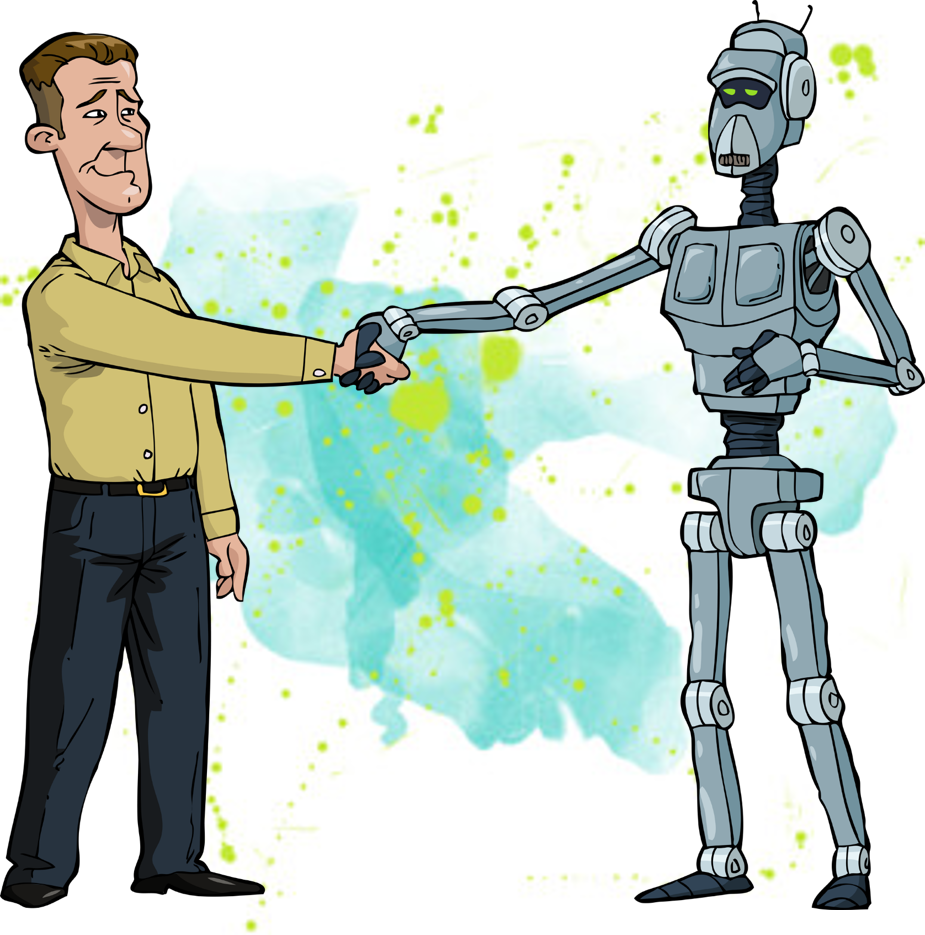In the 1950s, the golden age of sci-fi films, robots were depicted as both friend and foe to humans. French musician Thomas Bangalter (@_Bangalter_DP_) captured that duality when he stated, “The concept of the robot encapsulates both aspects of technology. On one hand, it’s cool, it’s fun, it’s healthy, it’s sexy, it’s stylish. On the other hand it’s terrifying, it’s alienating, it’s addictive, and it’s scary. That has been the subject of much science-fiction literature.”[1] We see this same duality in today’s workplace. Robots can relieve humans having to perform dirty, dangerous, or drudgerous work; but, robots can also make humans completely redundant. The debate rages about whether robots, automation, and artificial intelligence (AI) are going to take over the workplace creating unimaginable social chaos. Journalist Gary Forger writes, “Holy robots! It seems that most everywhere you look in the past couple of months there are robots. And they are almost always doing something new.”[2] He notes the attraction of robots for companies is “higher throughput with less labor.” That outcome has many pundits concerned about the future of jobs sustainability. Despite these concerns, Forger reports, “Demand for robots is expected to be strong for the foreseeable future.”
The robots are coming
“It’s inevitable,” writes journalist John Hitch (@JohnHitchIW). “The robot invasion is coming.”[3] To remind us of what could happen when machines and humans work side-by-side, he describes what happened when General Motors introduced robots into plant building Chevrolet Vegas. Robots could weld 100 vehicles per hour, but humans on the assembly line couldn’t keep up. To protest, the human employees sabotaged cars and eventually went on strike. Hitch writes, “It’s a valuable lesson on why humans don’t like being treated like machines. … With a new breed of robots on the market and more sophisticated automation solutions arriving every day, many workers once again feel they’re on the front lines of a full-scale robot takeover.” Nevertheless, Hitch concludes, “[The robot invasion is] not necessarily a bad thing.”
Hitch observes, “The typical U.S. factory is fighting a war on two new fronts: One with time, specifically the aging workforce running out of it; the other with interest, which is totally lacking from the potential reinforcements due to the repetitive, boring nature of the jobs.” Countries with aging populations and low birth rates, like Japan, have been looking to robots to fill jobs where younger workers are unavailable in sufficient numbers. And, as Hitch points out, in a full-employment economy, lack of interest in dirty, dangerous, or drudgerous work is another reason companies look to automation to complete essential tasks. What does this portend for the future of work? Robert J. Samuelson writes, “An unsettling specter haunts the world economy: a future of ubiquitous robots that destroy millions of jobs. Sometimes this is called ‘artificial intelligence’; sometimes it isn’t. Either way, it threatens the social stability of the United States and other advanced countries, which depend on most people working most of the time.”[4] Social instability and rampant unemployment is in no one’s best interest. That’s why most critics believe human workers will be augmented or complemented by robot co-workers rather than displaced by them.
The future of human/machine collaboration
Samuelson reports a study published by the Organization for Economic Cooperation and Development (OECD) “identifies three major threats to existing jobs: globalization (the shifting of work to foreign countries); aging societies (more people entering retirement); and digitalization (the introduction of new devices driven by the Internet and computers).” Nevertheless, the report also predicts there won’t be massive unemployment in the future. The reason for optimism, Samuelson notes, is historical precedent. “Jobs have been eliminated,” he writes, “there can be little doubt of that. But jobs have also been created. The lesson from history is that inventions and innovations have typically been more than offset by employment gains.” Another truth with which companies must come to grips is that robots, for all their sophistication, still aren’t as adaptable as human beings. Some things that are simple for humans to do aren’t necessarily so simple for robots to do. That’s why there is a rise in the sales of so-called cobots. Hitch reports, “According to the Robotic Industries Association, cobots, which accounted for an estimated 3% of all robot sales — or 11,416 in 2017 — are expected to capture 34% of that market in the next seven years.”
Samuel Stern (@samsternjones), a Principal Analyst at Forrester, insists, “The goal for every company should be to ensure that their humans can thrive when they work alongside robots and AI.”[5] He suggests three principles companies should adopt when implementing human/machine collaborative workplaces. They are:
- Free employees to do more important work. “There’s plenty of work that we as humans would prefer not to do. The great tragedy of modern technologies is that they have put the onus on high-salaried, busy knowledge workers to do their own administrative work — from scheduling meetings to expense reports. Why not give it all to machines? … Companies can gain enormous productive capacity for their most valuable human assets when they do this.”
- Adapt AI to humans, not humans to AI. “For too long, humans have had to adapt to their machines. Whether we’re hunched over our keyboards, straining our necks to hold a phone in place, or trying to remember an obscure command sequence, humans have had to be the flexible partner in the human-machine relationship. That must change.”
- Make humanness a strength. “Machines can be naive and unreasonable. So even as companies push for more collaboration between humans and machines, they must honor what makes us human. One key human strength is our judgment, which helps avoid AI literalism.”
Hitch notes, “While a typical industrial robot is fixed in place and needs a huge footprint and safety gating, cobots can be placed virtually anywhere, programmed to do many jobs.” The latest cobots are also extremely safety conscious; meaning humans and machines can work alongside each other. From their research, Stern concluded, “We believed that companies needed a plan for creating future employee experiences that didn’t leave humans either out of work or with jobs that left little for them to do.”
Concluding thoughts
What is the future of jobs sustainability? Stern writes, “We noticed that most of the predictions of how this would go were either utopias viewed through rose-colored glasses or dystopian nightmares darker than most science-fiction novels. Perfect or perfectly terrible future scenarios both sounded unlikely to us.” In other words, there are going to be job losses and job gains. Some workers will feel left behind and others will see opportunities. Samuelson concludes, “If there is one loud message from the [OECD] report, it is that many workers need more training so that they are more employable. This has long been a problem in the United States, where public retraining programs have not been notably successful and private-employer-based programs tend to ignore low-skilled workers. Still: In a pessimistic time, maybe some optimism is warranted.”
Footnotes
[1] Thomas Bangalter, “Robot Quotes,” BrainyQuote.
[2] Gary Forger, “While you were sleeping, robots took over,” Logistics Management, 4 June 2019.
[3] John Hitch, “The Great Robot Takeover: Fact or Fiction?” IndustryWeek, 7 June 2019.
[4] Robert J. Samuelson, “No, robots are not coming for your jobs,” The Washington Post, 28 April 2019.
[5] Samuel Stern, “Companies Must Start Creating Human-Machine Collaborations,” Forrester, 3 May 2019.





